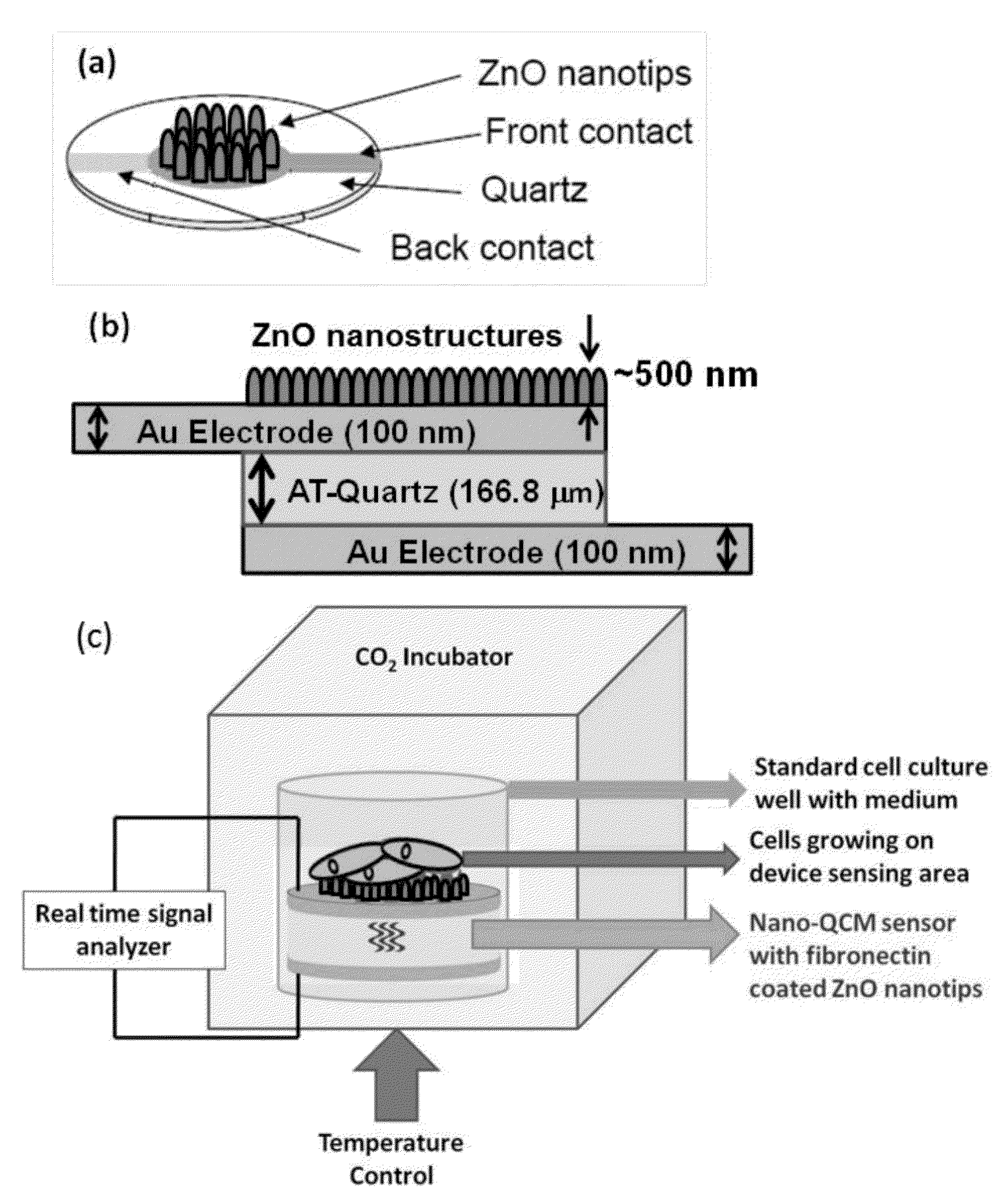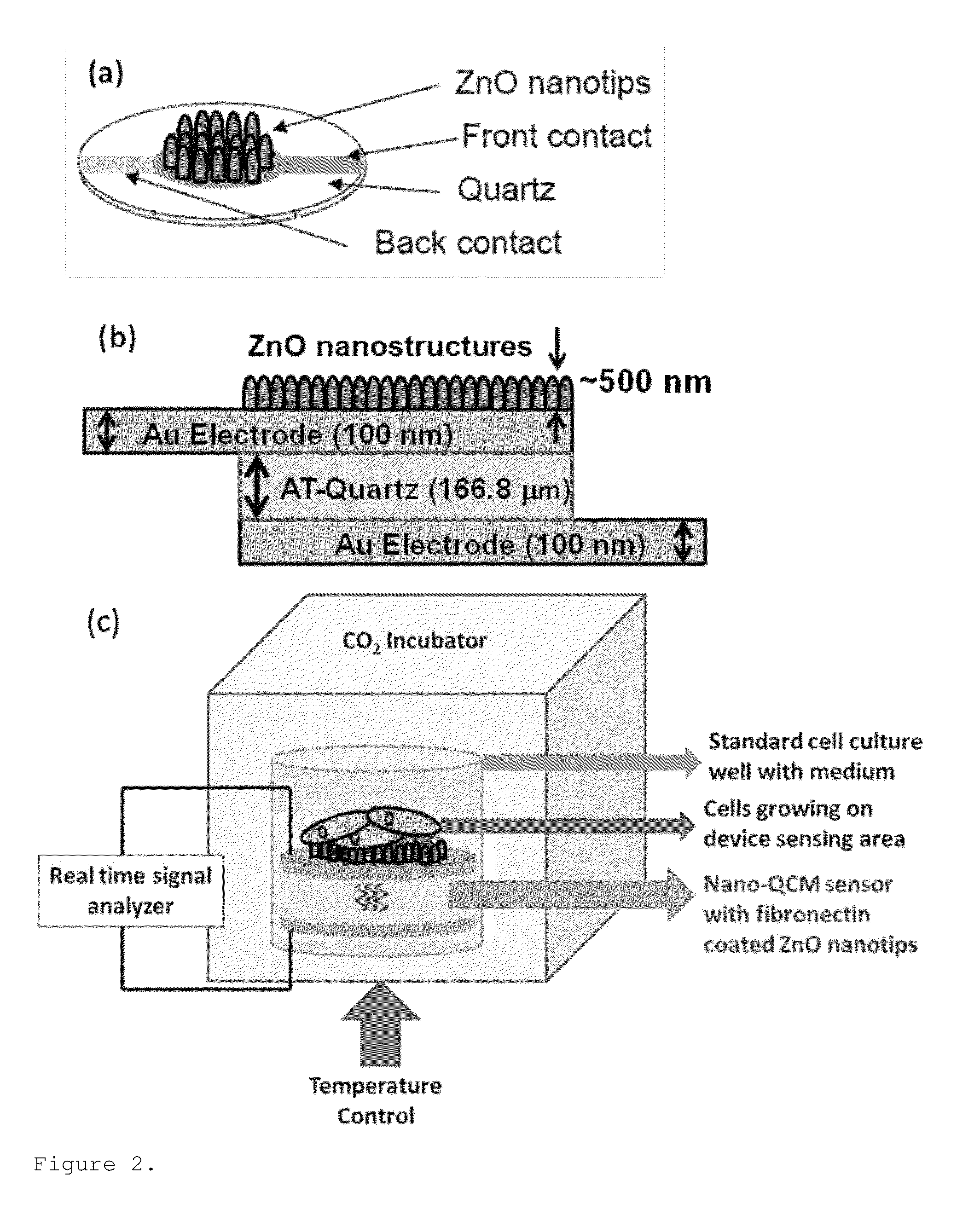Zinc oxide-based nanostructure modified QCM for dynamic monitoring of cell adhesion and proliferation
a nanostructure and nanotechnology, applied in the field of sensors, can solve the problems of not being able to simultaneously monitor large numbers of samples in real-time, not having label free, physical properties not good, etc., and achieve the effect of enhancing sensitivity and reducing the consumption of liquid samples of the sensor
- Summary
- Abstract
- Description
- Claims
- Application Information
AI Technical Summary
Benefits of technology
Problems solved by technology
Method used
Image
Examples
Embodiment Construction
[0022]A biosensor is a device which is capable of providing analysis of various analytes or biomolecules using biological recognition elements which are combined with a signal transducer. Generally, the sensor will produce a signal that is quantitatively related to the concentration of the analytes, or the transitions of biophysical states of the biological samples being sensed.
[0023]The biological recognition elements serve to recognize the analytes. These elements include enzymes, microorganisms, tissues, antibodies, receptors, nucleic acids, organelles or whole cells.
[0024]Transducers are physical components of the biosensor that respond to the products of the biosensing process and outputs the response in a form that can be amplified, stored or displayed. Biosensing occurs only when the analyte is recognized specifically by the biological element. Biological recognition in vivo at a single cell level is characterized by high sensitivity, fast response, specificity and reversibil...
PUM
| Property | Measurement | Unit |
|---|---|---|
| pressure | aaaaa | aaaaa |
| height | aaaaa | aaaaa |
| height | aaaaa | aaaaa |
Abstract
Description
Claims
Application Information
 Login to View More
Login to View More - R&D
- Intellectual Property
- Life Sciences
- Materials
- Tech Scout
- Unparalleled Data Quality
- Higher Quality Content
- 60% Fewer Hallucinations
Browse by: Latest US Patents, China's latest patents, Technical Efficacy Thesaurus, Application Domain, Technology Topic, Popular Technical Reports.
© 2025 PatSnap. All rights reserved.Legal|Privacy policy|Modern Slavery Act Transparency Statement|Sitemap|About US| Contact US: help@patsnap.com



